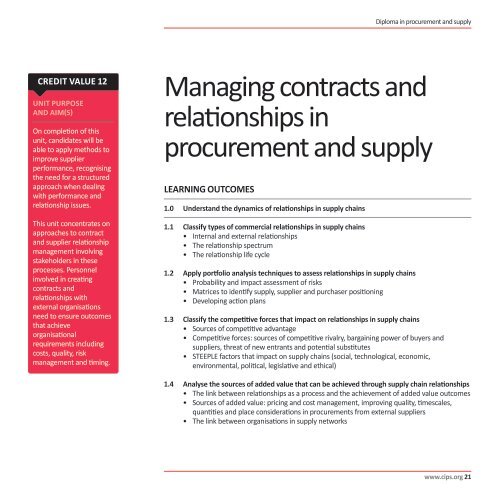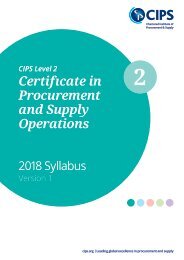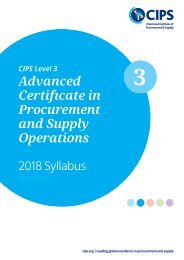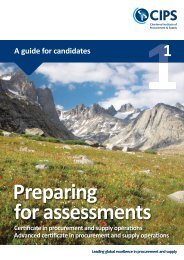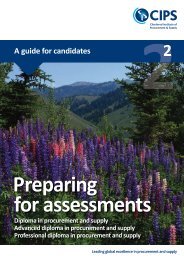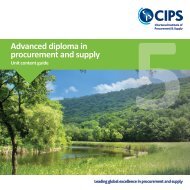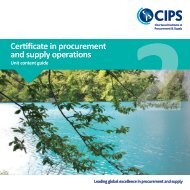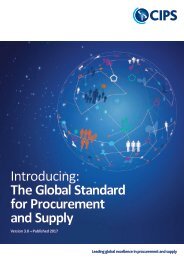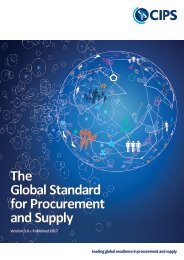CIPS_DipProcSupp_L4_UCG_24pp_210sq_0517_WEB
You also want an ePaper? Increase the reach of your titles
YUMPU automatically turns print PDFs into web optimized ePapers that Google loves.
Diploma in procurement and supply<br />
CREDIT VALUE 12<br />
UNIT PURPOSE<br />
AND AIM(S)<br />
On completion of this<br />
unit, candidates will be<br />
able to apply methods to<br />
improve supplier<br />
performance, recognising<br />
the need for a structured<br />
approach when dealing<br />
with performance and<br />
relationship issues.<br />
This unit concentrates on<br />
approaches to contract<br />
and supplier relationship<br />
management involving<br />
stakeholders in these<br />
processes. Personnel<br />
involved in creating<br />
contracts and<br />
relationships with<br />
external organisations<br />
need to ensure outcomes<br />
that achieve<br />
organisational<br />
requirements including<br />
costs, quality, risk<br />
management and timing.<br />
Managing contracts and<br />
relationships in<br />
procurement and supply<br />
LEARNINg OUTCOMES<br />
1.0 Understand the dynamics of relationships in supply chains<br />
1.1 Classify types of commercial relationships in supply chains<br />
• Internal and external relationships<br />
• The relationship spectrum<br />
• The relationship life cycle<br />
1.2 Apply portfolio analysis techniques to assess relationships in supply chains<br />
• Probability and impact assessment of risks<br />
• Matrices to identify supply, supplier and purchaser positioning<br />
• Developing action plans<br />
1.3 Classify the competitive forces that impact on relationships in supply chains<br />
• Sources of competitive advantage<br />
• Competitive forces: sources of competitive rivalry, bargaining power of buyers and<br />
suppliers, threat of new entrants and potential substitutes<br />
• STEEPLE factors that impact on supply chains (social, technological, economic,<br />
environmental, political, legislative and ethical)<br />
1.4 Analyse the sources of added value that can be achieved through supply chain relationships<br />
• The link between relationships as a process and the achievement of added value outcomes<br />
• Sources of added value: pricing and cost management, improving quality, timescales,<br />
quantities and place considerations in procurements from external suppliers<br />
• The link between organisations in supply networks<br />
www.cips.org 21


